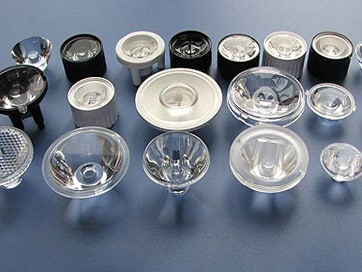The most common mistake in lighting terms associated with the quantity of light is between the intensity of a light source and its total output. The total output of a light source is described in “lumens”. Lumens have no implication of the direction or distribution of light, or the area to which the light is incident on. The intensity of a light source is described in “candelas” and is defined as the total luminous flux (total lumens) within a given solid angle.
To better understand light output versus intensity, think of your oven. If you preheat the oven to 350o, it will still be at 350o regardless of where you stand. However, if you stand right next to the oven you will feel the heat much more than you will if you stand 5 feet away. In this example, the oven temperature is just like light output, where a 1000 lumen lamp will always have 1000 lumens regardless of where you stand or where you aim it. The amount of heat you feel depending on where you stand is just like light intensity, where the candela value will get lower the further you are from the light source. For different types of light sources, such as directional lamps, the candela value will also get lower the greater the angle you are from the center point of the beam. This center point is known as the “center beam candle power”, or CBCP.
In discussing reflector style lamps, terms such as “beam angle”, “field angle” and “beam spread” are most commonly used to describe distribution patterns, but these terms are often mistakenly substituted for one another.
Beam spread is a general term that frequently causes more confusion than clarity. The Illuminating Engineering Society of North America (IESNA) defines beam spread as the angle between the two directions in a plane in which the intensity is equal to a stated percentage of the maximum beam intensity. This means that it can be the same value of either beam angle or field angle, depending on how it is specified. To avoid this unnecessary confusion and also obtain an accurate and complete description of a distribution pattern, beam angle and field angle should be used.
Beam angle is the angle between the two opposite points at which the maximum intensity (center beam candle power or CBCP) is at 50%. This is the distribution value that is most commonly known and used in the lighting industry. It is also the value that frequently comes with the notations, “spot” or “flood”. For example, a 10˚ spot is a lamp with where 50% intensity is at an angle of 5˚ on either side of its CBCP (See diagram).
Field angle is the angle between the two opposite points at which the maximum intensity is at 10% (See diagram). This value is often overlooked when it comes to directional lighting, but it is important to include because it helps to describe the expected gradient of the light output. For example, if the field angle is very close to the beam angle, then there will be a very sharp cutoff of light output. This is what would be expected out of a spot light used in theater stage lighting (see diagram). If the field angle is much larger, say double that of the beam angle, then there will be a larger gradient and therefore a softer cutoff of light output. This is what should be expected from most lamps intended for general lighting purposes.
LED reflector style lamps are available with different beam angles, similar to incandescent sources. This includes the narrow coverage spot lights (such as a 10 degree beam angle), wide coverage flood lights (such as a 40 degree beam angle), and everything in between. In fact, optical control (both beam and field angles) with LED sources is often easier to accomplish than in incandescent sources which is why high quality LED reflector style lamps have very smooth even light distributions with limited spill and striations.
The benefit of quality LED optics is often discussed without many people realizing it. Many times, people will describe LED reflector style lamps as having more “punch” than halogen lamps with their equivalent lumen output. This is entirely due to the control of the optics. For example, in a 10 degree LED spot lamp with 1000 lumen light output, virtually all of the 1000 lumens can be delivered to the desired area if high quality lenses are used. If you take a 10 degree halogen spot lamp with 1000, where there can be more than a 10% light loss due to the inefficiency of metal reflectors, only 900 lumens may be delivered to the desired area.
